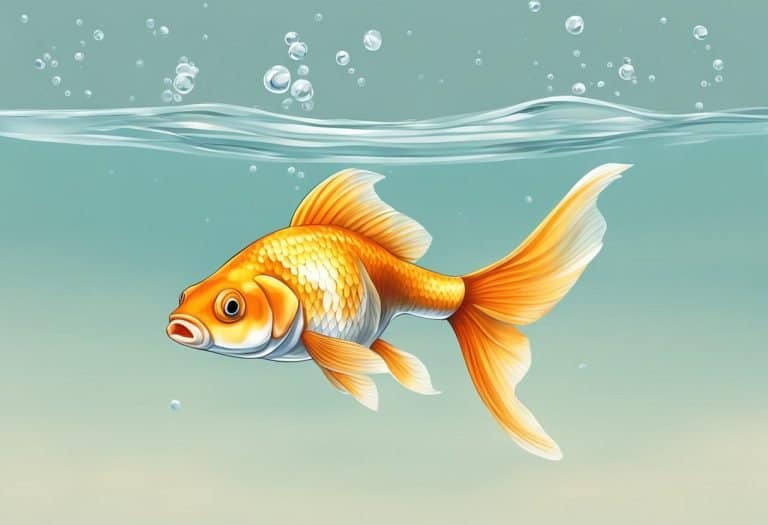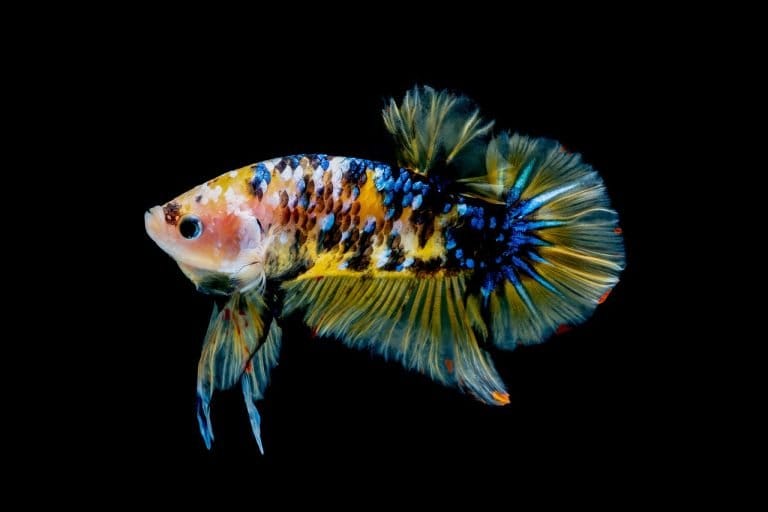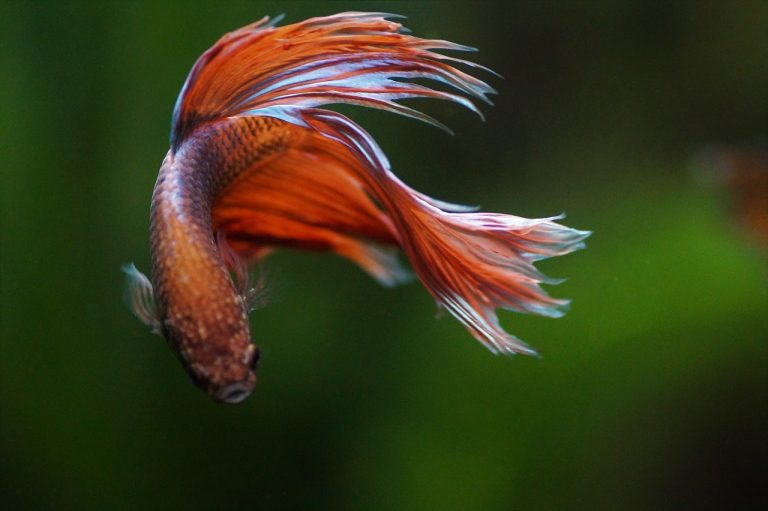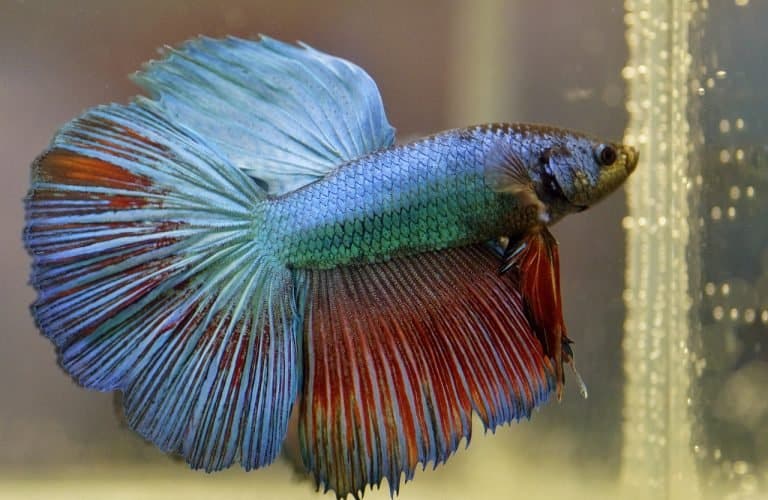Welcome to our ultimate guide to pond goldfish! In this article, we’ll explore the different types of pond goldfish, share essential care tips, and highlight best practices for your garden pond.
Whether you’re new to keeping goldfish or a seasoned enthusiast, we’ve got you covered. From choosing the right goldfish for your pond to creating a suitable environment, feeding and nutrition, and managing their health, we’ll provide you with the knowledge and freedom to create a thriving pond for your goldfish.
Let’s dive in!
Key Takeaways
- There are different types of pond goldfish with beautiful color variations and varying sizes.
- Pond goldfish are known for their hardy nature and adaptability.
- Care and maintenance of pond goldfish include considerations for water temperature, feeding requirements, and compatibility with other fish.
- Creating a well-balanced ecosystem, maintaining water quality, and avoiding overcrowding are important best practices for a garden pond.
Types of Pond Goldfish
Let’s start exploring the fascinating world of pond goldfish types.
We’ll learn about the beautiful color variations that exist, the different sizes each type can reach, and the common breeds found in garden ponds.
Understanding the characteristics of each type will help us create an ideal environment for our goldfish, including maintaining the right water temperature.
Color Variations of Goldfish
Among the various types of pond goldfish, there’s a wide range of color variations to choose from. Whether you have a comet goldfish, common goldfish, fantail goldfish, or shubunkin goldfish, you can find a variety of goldfish with stunning colors to enhance the beauty of your outdoor pond.
From vibrant oranges and reds to shimmering whites and blacks, these colorful pond fish can bring life and excitement to your garden. Imagine a pond filled with a mix of goldfish in different shades of gold, yellow, and orange, creating a mesmerizing display of colors.
With so many options available, you can truly personalize your pond and create a visually appealing oasis that reflects your style and taste.
Size Differences Between Types
How do the different types of pond goldfish vary in size?
When it comes to goldfish, size can vary depending on the type of goldfish and the conditions in which they’re kept. Some popular types of pond goldfish include the comet, wakin goldfish, black moor, and oranda.
The comet goldfish is known for its long, slender body and can grow up to 10-12 inches in length.
The wakin goldfish is similar in size to the comet, reaching a length of 10-12 inches.
The black moor goldfish, with its distinctive black coloration, tends to be smaller, growing up to 6-8 inches.
The oranda goldfish, known for its fancy head growth, can reach a size of 8-12 inches.
It’s important to note that these sizes are approximate and can vary depending on factors such as genetics, diet, and environmental conditions.

Common Pond Goldfish Breeds
There are several common breeds of goldfish that are well-suited for garden ponds. These breeds include the black moor goldfish, oranda goldfish, sarasa comet, shubunkin or comet, and the red cap oranda.
The black moor goldfish is known for its striking black color and protruding eyes.
The oranda goldfish is recognized by its prominent head growth, known as the wen, which can be red, white, or even gold.
The sarasa comet is a beautiful red and white variety, while the shubunkin or comet has a calico pattern with splashes of red, orange, black, and white.
Finally, the red cap oranda has a red wen on top of its head, giving it a unique appearance.
These fancy varieties of pond goldfish add beauty and charm to any garden pond.
Characteristics of Each Type
We will now explore the unique characteristics of each type of pond goldfish.
Pond goldfish are known for their hardy nature and ability to thrive in various environments.
One popular variety is the common goldfish, which is often found in aquariums and is known for its vibrant colors and adaptability.
Another type is the calico goldfish, which features a beautiful mix of orange, black, and white patches.
Fancy goldfish, such as the bubble eye goldfish, have unique physical traits like bulging eyes and flowing fins, making them a favorite among goldfish enthusiasts.
When selecting goldfish for your goldfish pond, it’s important to consider the specific needs and requirements of each type to ensure their health and happiness in their new aquatic home.
Ideal Water Temperature
To maintain the health and well-being of different types of pond goldfish, it’s crucial to provide them with an ideal water temperature. Goldfish are resilient creatures, but they thrive in specific temperature ranges. As caretakers of these beautiful fish, it’s our responsibility to create the best environment for them.
The ideal water temperature for most varieties of goldfish in a garden pond is between 65°F and 75°F (18°C and 24°C). This range ensures that the goldfish can metabolize food efficiently, maintain their immune system, and stay active and healthy. It’s important to monitor the water temperature regularly, especially during extreme weather conditions.
In colder climates, a pond heater or de-icer can be used to prevent the water from freezing. Conversely, during hot summer months, shade and proper aeration should be provided to keep the water cool.
Feeding Requirements for Goldfish
Maintaining the ideal water temperature is essential for the health and well-being of pond goldfish. It’s equally important to provide them with the appropriate feeding requirements. Goldfish in garden ponds have different types and each may have slightly different feeding needs.
When it comes to feeding goldfish, it’s best to follow some best practices to ensure their optimal care. Goldfish are omnivores, so their diet should consist of a variety of food, including pellets, flakes, and live or frozen foods like brine shrimp or daphnia. It’s important to feed them small amounts multiple times a day, rather than one large feeding, to prevent overeating and to avoid polluting the pond.
Additionally, be mindful of the specific dietary requirements of different goldfish types, such as fancy goldfish needing a more specialized diet. By providing the right feeding requirements, you can help your goldfish thrive in your garden pond.
Compatibility With Other Fish
How can pond goldfish types be compatible with other fish? When it comes to creating a vibrant and harmonious pond ecosystem, it’s important to choose the right companions for your goldfish. Here are some fish that can coexist peacefully with goldfish in your pond:
- Koi: These majestic fish are known for their large size and variety of colors. They make excellent companions for goldfish, as they share similar care requirements and can create a stunning display in your pond.
- Rosy Red Minnows: These small, silver fish are lively and active, adding movement to your pond. They’re hardy and can withstand a wide range of water conditions, making them a great choice for beginners.
- White Cloud Mountain Minnows: These tiny, peaceful fish have a shimmering silver color that complements the bright colors of goldfish. They’re easy to care for and can thrive in colder water temperatures.
- Weather Loaches: These unique fish have a long, slender body and are known for their playful and curious nature. They’re compatible with goldfish and can even help control snail populations in your pond.
- Plecos: These bottom-dwelling fish are known for their ability to keep algae growth in check. With their unique appearance and peaceful temperament, they can be a great addition to your pond.
Recommended Pond Size
When choosing the appropriate pond size for different types of pond goldfish, it is essential to consider their growth potential and space requirements. Goldfish have the potential to grow quite large, and providing them with enough space is crucial for their overall health and well-being. Here are some recommended pond sizes for different types of pond goldfish:
| Type of Goldfish | Recommended Pond Size |
|---|---|
| Common Goldfish | 1000 gallons per fish |
| Comet Goldfish | 1000 gallons per fish |
| Shubunkin Goldfish | 1000 gallons per fish |
| Fantail Goldfish | 500 gallons per fish |
As you can see from the table above, each type of goldfish requires a certain amount of space to thrive. Providing them with the recommended pond size will ensure they have enough room to swim and grow. Remember, a larger pond also means a healthier and more vibrant goldfish population in your garden pond.
Lifespan of Different Types
When it comes to the lifespan of goldfish in a pond, there are several factors that can influence how long they live. Here are some key considerations to keep in mind:
- Water quality: Maintaining clean and healthy water is crucial for the wellbeing of your goldfish. Poor water quality can lead to stress and diseases, ultimately shortening their lifespan.
- Diet and nutrition: Providing a balanced and nutritious diet is essential for the overall health of your goldfish. Feeding them a variety of high-quality food will help promote longevity.
- Genetics: Different types of goldfish have varying lifespans due to their genetic makeup. Some breeds have been selectively bred for longer lifespans, while others may be more prone to certain health issues.
- Pond size: Offering ample space for your goldfish to swim and thrive is important. A larger pond allows for better oxygenation and reduces the risk of overcrowding, which can impact their longevity.
- Environmental factors: Factors such as temperature fluctuations, predators, and exposure to harmful chemicals or toxins can all affect the lifespan of your goldfish.
Breeding Habits and Challenges
To understand the breeding habits and challenges of different types of pond goldfish, we need to consider their reproductive behavior and unique characteristics. Goldfish are known to be prolific breeders, especially in a pond environment where they’ve ample space and resources.
There are various goldfish species that can breed in a pond, including the common goldfish, comet goldfish, and shubunkin goldfish. Breeding habits can vary between these species, but they generally involve the male chasing the female and nudging her to release eggs, which the male then fertilizes externally.
Challenges in breeding pond goldfish can arise from factors such as water quality, temperature fluctuations, and competition for mates. It’s important for pond owners to create a suitable environment and provide proper care to ensure successful breeding of their goldfish.
Care Tips for Pond Goldfish
Our goal is to provide the best care for our pond goldfish. Here are some care tips to ensure our finned friends thrive in our goldfish pond:
- Maintain a healthy environment: Regularly clean the pond, remove debris, and keep the water well-oxygenated to promote the overall well-being of our goldfish.
- Choose suitable pond mates: Introduce goldfish that are similar in size and temperament to avoid any aggression or stress among the fish.
- Provide proper nutrition: Feed our goldfish a balanced diet of high-quality fish food, including pellets, flakes, and occasional treats. Avoid overfeeding to prevent water pollution.
- Protect from predators: Install netting or other protective measures to keep our goldfish safe from birds, raccoons, and other potential predators.
- Monitor and treat health issues: Regularly check for signs of illness or disease, such as changes in behavior or appearance, and promptly address any issues that arise.
Best Practices for a Garden Pond
Implementing proper maintenance is crucial for maintaining a healthy and vibrant garden pond. As pond enthusiasts, we want our aquatic ecosystem to thrive, and that includes creating the best possible environment for our goldfish and koi.
When it comes to creating the best pond for your fish, there are a few key practices to keep in mind. Firstly, ensure that you have a well-balanced ecosystem by incorporating aquatic plants and a filtration system. This will help maintain water quality and provide natural hiding places for your fish.
Additionally, regular water testing and maintenance, such as removing debris and excess algae, is essential for the overall health and clarity of the pond. Remember to also monitor the population of fish in your pond to prevent overcrowding, as this can lead to stress and disease.
Choosing the Right Goldfish for Your Pond
When creating the best pond for our goldfish and koi, it’s important to choose the right type of goldfish for our garden pond. With so many options available, it can be overwhelming to make a decision. However, here are some key factors to consider when choosing the perfect goldfish for your pond:
- Size: Different types of goldfish have different growth rates, so it’s important to choose a goldfish that will fit comfortably in your pond.
- Temperament: Some goldfish are more social and friendly, while others prefer to be left alone. Consider the dynamics of your pond and choose a goldfish that will thrive in that environment.
- Color: Goldfish come in a variety of colors and patterns, so pick one that matches your aesthetic preferences.
- Hardiness: Look for goldfish that are known for their resilience and ability to adapt to different pond conditions.
- Maintenance: Consider the level of care required for each type of goldfish and choose one that fits your lifestyle and desired level of involvement.
Creating a Suitable Environment for Pond Goldfish
To ensure the health and well-being of our goldfish, we need to create a suitable environment in our garden pond.
The first thing we should consider is the climate in our area. Goldfish are resilient and can adapt to various climates, but extreme temperatures can be challenging for them. It’s important to provide shade and shelter in the pond to protect our goldfish from harsh weather conditions.
Additionally, we should carefully choose the size of our pond. A larger pond is generally better as it provides more space for the goldfish to swim and thrive.
It’s also recommended to keep koi and goldfish together in the same pond, as they can coexist peacefully.
Feeding and Nutrition for Pond Goldfish
Our goldfish’s feeding and nutrition are crucial aspects of their care that we must prioritize. Properly feeding our goldfish in a garden pond is essential for their overall health and well-being. Here are some best practices for feeding and nutrition:
- Variety is key: Offering a diverse range of foods such as pellets, flakes, and live or frozen treats ensures a balanced diet.
- Feed in moderation: Overfeeding can lead to water quality issues and health problems. Feed only what your goldfish can consume in a few minutes.
- Monitor water temperature: Goldfish have different feeding requirements depending on the water temperature. Adjust their diet accordingly.
- Supplement with vegetation: Including plant matter like duckweed or lettuce provides essential nutrients and aids in digestion.
- Observe and adjust: Regularly monitor your goldfish’s weight and overall condition to make necessary adjustments in their feeding routine.
Health and Disease Management for Pond Goldfish
As we continue our discussion on the care of pond goldfish, let’s delve into the important topic of managing the health and diseases that may affect these beautiful aquatic creatures. Goldfish, a type of carp, are known for their hardy nature and can live for many years if provided with proper care. However, they are not immune to health issues. It is crucial for pond enthusiasts to be knowledgeable about common diseases and how to prevent and treat them. Regular observation of their body shape, dorsal fin, and behavior can help identify any potential health problems. To assist you further, we have prepared a comprehensive table below, outlining common diseases, symptoms, and recommended treatments. By being proactive in managing the health of your pond goldfish, you can ensure their longevity and enjoy their beauty for years to come.
| Disease | Symptoms | Treatment |
|---|---|---|
| Ichthyophthirius (Ich) | White spots, flashing, lethargy | Medications and salt baths |
| Dropsy | Swollen abdomen, raised scales, loss of appetite | Antibiotics and clean water |
| Fin rot | Ragged fins, redness, lethargy | Antibiotics, clean water, and salt baths |
| Swim bladder disease | Floating or sinking, difficulty swimming | Adjusting diet and water conditions |
| Fungus | Cotton-like growths, redness, lethargy | Antifungal medications and clean water |
Conclusion
In conclusion, creating a thriving garden pond for your goldfish requires careful consideration of their specific needs.
By choosing the right goldfish type, providing a suitable environment, and following proper care and feeding practices, you can enjoy the beauty and tranquility of your pond for years to come.
Remember to regularly monitor your goldfish’s health and take necessary measures to prevent and manage diseases.
With these best practices in place, your pond goldfish can thrive and bring joy to your outdoor space.




